 W
WChemical warfare (CW) involves using the toxic properties of chemical substances as weapons. This type of warfare is distinct from nuclear warfare, biological warfare and radiological warfare, which together make up CBRN, the military acronym for nuclear, biological, and chemical, all of which are considered "weapons of mass destruction" (WMDs). None of these fall under the term conventional weapons which are primarily effective due to their destructive potential. In theory, with proper protective equipment, training, and decontamination measures, the primary effects of chemical weapons can be overcome. In practice, they continue to cause much suffering, as most victims are defenseless. Many nations possess vast stockpiles of weaponized agents in preparation for wartime use. The threat and the perceived threat have become strategic tools in planning both measures and counter-measures.
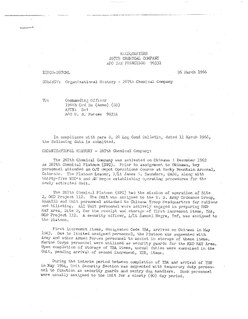 W
WThe 267th Chemical Company was a military unit of the U.S. Army Chemical Corps responsible for the surety of chemical warfare agents dubbed "RED HAT" deployed to the Islands of Okinawa, Japan and subsequently Johnston Atoll in the Pacific Ocean. A recently discovered Army document reveals that the true mission of the 267th Chemical Company was the operation of the Okinawa deployment site as part Project 112. Project 112 was a 1960s biological warfare field test program that was conducted by the Deseret Test Center. Okinawa is not listed as a test site under Project 112 by the U.S. Department of Defense.
 W
WThe Al-Shifa pharmaceutical factory in Khartoum North, Sudan, was constructed between 1992 and 1996 with components imported from Germany, India, Italy, Sweden, Switzerland, Thailand and the United States. It was opened on 12 July 1997 and bombed by the United States on August 20, 1998.
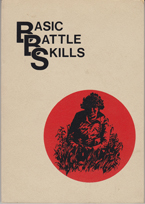 W
WBasic Battle Skills is a field training manual formerly issued to individual soldiers in the British Army.
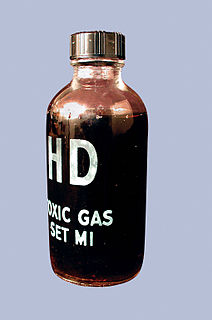 W
WChemical Agent Identification Sets (CAIS), known by several other names, were sets of glass vials or bottles that contained small amounts of chemical agents. They were employed by all branches of the United States Armed Forces from 1928-1969 for the purpose of training in detection, handling and familiarization with chemical warfare. Most CAIS were destroyed in the 1980s but the U.S. Army Chemical Materials Agency still occasionally demilitarizes CAIS that are found buried.
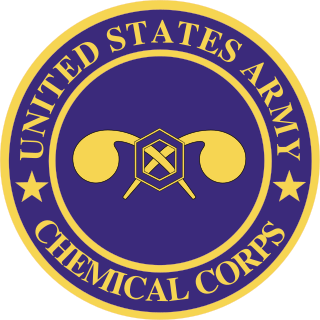 W
WThe Chemical Corps is the branch of the United States Army tasked with defending against chemical, biological, radiological, and nuclear (CBRN) weapons. The corps was founded as the U.S. Chemical Warfare Service (CWS) during World War I. Its name was changed to the Chemical Corps in 1946. For most of its history, the Chemical Corps was tasked with delivering chemical weapons rather than defending against them.
 W
WA chemical weapon (CW) is a specialized munition that uses chemicals formulated to inflict death or harm on humans. According to the Organisation for the Prohibition of Chemical Weapons (OPCW), "the term chemical weapon may also be applied to any toxic chemical or its precursor that can cause death, injury, temporary incapacitation or sensory irritation through its chemical action. Munitions or other delivery devices designed to deliver chemical weapons, whether filled or unfilled, are also considered weapons themselves."
 W
WMany nations continue to research and/or stockpile chemical weapon agents despite numerous efforts to reduce or eliminate them. Most states have joined the Chemical Weapons Convention (CWC), which required the destruction of all chemical weapons by 2012. Twelve nations have declared chemical weapons production facilities and six nations have declared stockpiles of chemical weapons. All of the declared production facilities have been destroyed or converted to civilian use after the treaty went into force. According to the United States government, at least 17 nations currently have active chemical weapons programs.
 W
WThe Chemical Weapons Convention (CWC) is an arms control treaty that outlaws the production, stockpiling, and use of chemical weapons and their precursors. The full name of the treaty is the Convention on the Prohibition of the Development, Production, Stockpiling and Use of Chemical Weapons and on their Destruction and it is administered by the Organisation for the Prohibition of Chemical Weapons (OPCW), an intergovernmental organization based in The Hague, The Netherlands. The treaty entered into force on 29 April 1997. The Chemical Weapons Convention prohibits the large-scale use, development, production, stockpiling and transfer of chemical weapons. Very limited production for research, medical, pharmaceutical or protective purposes is still permitted. The main obligation of member states under the convention is to effect this prohibition, as well as the destruction of all current chemical weapons. All destruction activities must take place under OPCW verification.
 W
WThe Day of Remembrance for all Victims of Chemical Warfare is an annual event held April 29th as a "tribute to the victims of chemical warfare, as well as to reaffirm the commitment of the Organisation for the Prohibition of Chemical Weapons (OPCW) to the elimination of the threat of chemical weapons, thereby promoting the goals of peace, security, and multilateralism." It is officially recognised by the United Nations (UN) and has been celebrated since 2005. On the 2013 observance day, the UN Secretary-General Ban Ki-moon gave a speech where he stated:On this Remembrance Day, I urge the international community to intensify efforts to rid the world of chemical weapons, along with all other weapons of mass destruction. Let us work together to bring all States under the Convention and promote its full implementation. This is how we can best honour past victims and liberate future generations from the threat of chemical weapons.
 W
WThe destruction of Syria's chemical weapons began on 14 September 2013 after Syria entered into several international agreements which called for the elimination of Syria's chemical weapon stockpiles and set a destruction deadline of 30 June 2014. On the same day, Syria acceded to the Chemical Weapons Convention (CWC) and agreed to its provisional application pending its entry into force on 14 October. Having acceded to the CWC, the Organisation for the Prohibition of Chemical Weapons (OPCW) Executive Council on 27 September approved a detailed implementation plan that required Syria to assume responsibility for and follow a timeline for the destruction of Syrian chemical weapons and Syrian chemical weapon production facilities. Following the signing of the Framework Agreement on 14 September 2013 and after the OPCW implementation plan, on 27 September the United Nations Security Council unanimously adopted Resolution 2118 which bound Syria to the timetable set out in the OPCW implementation plan. The joint OPCW-UN mission was established to oversee the implementation of the destruction program.
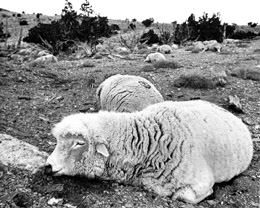 W
WThe Dugway sheep incident, also known as the Skull Valley sheep kill, was a 1968 sheep kill that has been connected to United States Army chemical and biological warfare programs at Dugway Proving Ground in Utah. Six thousand sheep were killed on ranches near the base, and the popular explanation blamed Army testing of chemical weapons for the incident, though alternative explanations have been offered. A report, commissioned by Air Force Press Officer Jesse Stay and first made public in 1998, was called the "first documented admission" from the Army that a nerve agent killed the sheep at Skull Valley.
 W
WAmos Alfred Fries was a general in the United States Army and 1898 graduate of the United States Military Academy. Fries was the second chief of the army's Chemical Warfare Service, established during World War I. Fries served under John J. Pershing in the Philippines and oversaw the construction of the roads and bridges in Yellowstone National Park. He eventually became an important commander in World War I. After he retired from the Army in 1929, Fries wrote two anti-communist books. He died in 1963 and is buried in Arlington National Cemetery.
 W
WFrançois Auguste Victor Grignard was a Nobel Prize-winning French chemist.
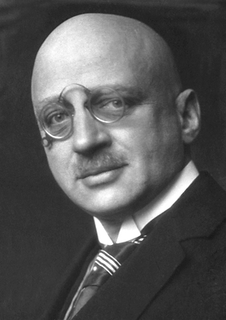 W
WFritz Haber was a German chemist who received the Nobel Prize in Chemistry in 1918 for his invention of the Haber–Bosch process, a method used in industry to synthesize ammonia from nitrogen gas and hydrogen gas. This invention is of importance for the large-scale synthesis of fertilizers and explosives. The food production for half the world's current population involves this method for producing nitrogen fertilizers. Haber, along with Max Born, proposed the Born–Haber cycle as a method for evaluating the lattice energy of an ionic solid.
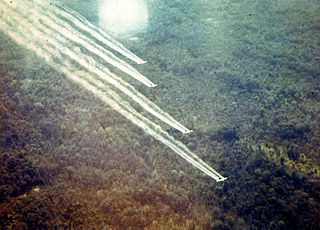 W
WHerbicidal warfare is the use of substances primarily designed to destroy the plant-based ecosystem of an area. Although herbicidal warfare use chemical substances, its main purpose is to disrupt agricultural food production and/or to destroy plants which provide cover or concealment to the enemy, not to asphyxiate or poison humans and/or destroy human-made structures. Herbicidal warfare has been forbidden by the Environmental Modification Convention since 1978, which bans "any technique for changing the composition or structure of the Earth's biota".
 W
WOperation LAC was a United States Army Chemical Corps operation which dispersed microscopic zinc cadmium sulfide (ZnCdS) particles over much of the United States and Canada in order to test dispersal patterns and the geographic range of chemical or biological weapons.
 W
WParties to the Chemical Weapons Convention encompasses the states that have ratified or acceded to the Chemical Weapons Convention, a multilateral treaty outlawing the production, stockpiling, and use of chemical weapons. In addition, these states are members of the Organisation for the Prohibition of Chemical Weapons (OPCW).
 W
WLieutenant General Sir Kenneth Morley Loch, KCIE, KBE, CB, MC, was a Scottish soldier in the British Army and defence planner.
 W
WLeading Aircraftman Ronald George Maddison was a twenty-year-old Royal Air Force engineer who died as the result of exposure to nerve agents while acting as a voluntary test subject at Porton Down, in Wiltshire, England. After substantial controversy, his death was the subject of an inquest 51 years after the event.
 W
WOperation Masher was in early 1966 the largest search and destroy mission that had been carried out in the Vietnam War up until that time. It was a combined mission of the United States Army, Army of the Republic of Vietnam (ARVN), and Republic of Korea Army (ROK) in Bình Định Province on the central coast of South Vietnam. The People's Army of Vietnam (PAVN) 3rd Division, made up of two regiments of North Vietnamese regulars and one regiment of main force Viet Cong (VC) guerrillas, controlled much of the land and many of the people of Bình Định Province, which had a total population of about 800,000. A CIA report in 1965 said that Binh Dinh was "just about lost" to the communists.
 W
WMOPP is protective gear used by U.S. military personnel in a toxic environment, e.g., during a chemical, biological, radiological, or nuclear (CBRN) strike:Protective mask — Commonly referred to as a gas mask or pro mask. It is designed to filter harmful chemical and biological agents, as well as irradiated particles from the air to allow the wearer to breathe safely. No protective masks filter out gases such as carbon monoxide, and in situations requiring that level of protection, external breathing apparatus is employed. Mask carrier — Protects the mask from damage. It is usually worn as part of battle gear for easy access and usually contains a technical manual, extra filter, spare parts, chemical detection papers, and nerve agent antidote kits (NAAK). Over garments — Joint Service Lightweight Integrated Suit Technology (JSLIST) Specially designed clothing to be worn over the normal uniform. These garments are designed to allow maximum airflow for cooling while keeping chemical and biological agents from reaching the skin of the wearer. Some are equipped with a charcoal lining to neutralize some agents. Military personnel often equip over garments with strips of M9 Detector Paper to identify chemical agents on the battlefield they might come in contact with. M9 Detector paper is worn to detect chemical liquid agents that a service member may brush against while in MOPP gear. It is worn in three different areas of the suit. It is worn on the dominant arm, bicep area, on the wrist of the opposite arm, and on the dominant leg, shin area. It is also placed on lower levels of vehicles for detection purposes. Gloves and overboots — (JSLIST) Highly durable rubber, designed with combat operations in mind. Used to prevent contact with agents.
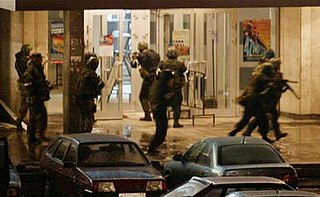 W
WThe Moscow theater hostage crisis was the seizure of a crowded Dubrovka Theater by 40 to 50 armed Chechens on 23 October 2002 that involved 850 hostages and ended with the deaths of at least 170 people. The attackers, led by Movsar Barayev, claimed allegiance to the Islamist separatist movement in Chechnya. They demanded the withdrawal of Russian forces from Chechnya and an end to the Second Chechen War.
 W
WNakam was a group of about fifty Holocaust survivors who, in 1945, sought to kill Germans and Nazis in revenge for the murder of six million Jews during the Holocaust. Led by Abba Kovner, the group sought to kill six million Germans in a form of indiscriminate revenge, "a nation for a nation". Kovner went to Mandatory Palestine in order to secure large quantities of poison for poisoning water mains to kill large numbers of Germans, and his followers infiltrated the water system of Nuremberg. However, Kovner was arrested by the British on his return to Europe and had to throw the poison overboard.
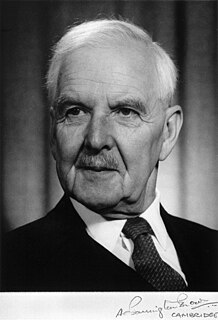 W
WSir Rudolph Albert Peters MC MID FRS HFRSE FRCP LLD was a British biochemist. He led the research team at Oxford who developed British Anti-Lewisite (BAL), an antidote for the chemical warfare agent lewisite. His efforts investigating the mechanism of arsenic war gases were deemed crucial in maintaining battlefield effectiveness.
 W
WProject 112 was a biological and chemical weapon experimentation project conducted by the United States Department of Defense from 1962 to 1973.
 W
WOperation Ranch Hand was a U.S. military operation during the Vietnam War, lasting from 1962 until 1971. Largely inspired by the British use of 2,4,5-T and 2,4-D during the Malayan Emergency in the 1950s, it was part of the overall chemical warfare program during the war called "Operation Trail Dust". Ranch Hand involved spraying an estimated 20 million U.S. gallons (76,000 m3) of defoliants and herbicides over rural areas of South Vietnam in an attempt to deprive the Viet Cong of food and vegetation cover. Areas of Laos and Cambodia were also sprayed to a lesser extent. Nearly 20,000 sorties were flown between 1961 and 1971.
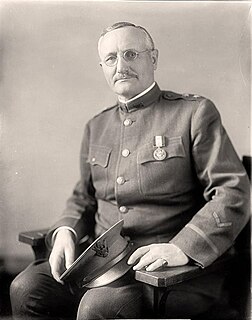 W
WMajor General William Luther Sibert was a senior United States Army officer who commanded the 1st Division on the Western Front during World War I.
 W
WOperation Steel Box, also known as Operation Golden Python, was a 1990 joint U.S.-West German operation which moved 100,000 U.S. chemical weapons from Germany to Johnston Atoll.
 W
WSurvive To Fight is the title of a British Army publication which details the use of NBC protective equipment and other procedures to be carried in the event of an attack with nuclear, biological or chemical weapons. So far five editions have been published ; the first three of which are in the form of a ring-bound manual with a plastic cover, and the last, Edition 5, is a 82 page loose leaf TAM insert. Edition I (AC71388) covers the use of the S6 Respirator and Mk.III NBC suit and overboots, Edition II (1990) featuring the S10 Respirator and Mk.IV suit and overboots which were introduced since. Edition III with different colour photographs on cover (1995) is a revised version of II, and features the addition of the Mk.V overboots. Edition IV is a TAM sided bound booklet. The last edition carrying the title 'Survive to Fight' was issued in September 2005, though this carried Army Code 64358.
 W
WThe M3 Stuart, officially Light Tank, M3, was an American light tank of World War II. An improved version entered service as M5. It was supplied to British and other Commonwealth forces under lend-lease prior to the entry of the U.S. into the war. Thereafter, it was used by U.S. and Allied forces until the end of the war.
 W
WChemical warfare is "the use of toxic chemicals in battle." The precise date of the first instances of chemical warfare is unknown, but scholars speculate that smoke have been used as an irritant in both battles and for hunting in prehistoric times. The first records of chemical warfare come from accounts of India in the fourth century BC, when Indian archers dipped their arrows in snake venom. In the same period, the use of smoke against enemies digging tunnels was first recorded in Greece and China. The next several centuries witnessed more and more sophisticated applications of toxic smoke and poisons in warfare.
 W
WA variety of treaties and agreements have been enacted to regulate the use, development and possession of various types of weapons of mass destruction. Treaties may regulate weapons use under the customs of war, ban specific types of weapons, limit weapons research, limit allowable weapons stockpiles and delivery systems or regulate civilian use of weapon precursors. The history of weapons control has also included treaties to limit effective defense against weapons of mass destruction in order to preserve the deterrent doctrine of mutual assured destruction as well as treaties to limit the spread of nuclear technologies geographically.
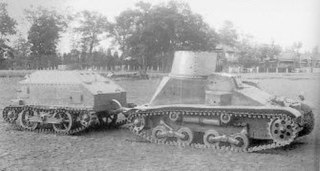 W
WThe Type 94 Disinfecting Vehicle and Type 94 Gas Scattering Vehicle was a variant of the Type 94 tankette adapted to chemical warfare by the Imperial Japanese Army. The Type 94 Disinfecting Vehicle and Type 94 Gas Scattering Vehicle were configured as an independent mobile liquid dissemination chemical vehicle with respective mobile disinfecting anti-chemical agents vehicle for support to Japanese chemical infantry units in combat.
 W
WThe Chemical Corps is the branch of the United States Army tasked with defending against chemical, biological, radiological, and nuclear (CBRN) weapons. The corps was founded as the U.S. Chemical Warfare Service (CWS) during World War I. Its name was changed to the Chemical Corps in 1946. For most of its history, the Chemical Corps was tasked with delivering chemical weapons rather than defending against them.
 W
WHerbicidal warfare research by the U.S. military began during the Second World War with additional research during the Korean War. Interest among military strategists waned before a budgetary increase allowed further research during the early Vietnam War. The U.S. research culminated in the U.S. military defoliation program during the Vietnam war known as Operation Ranch Hand.